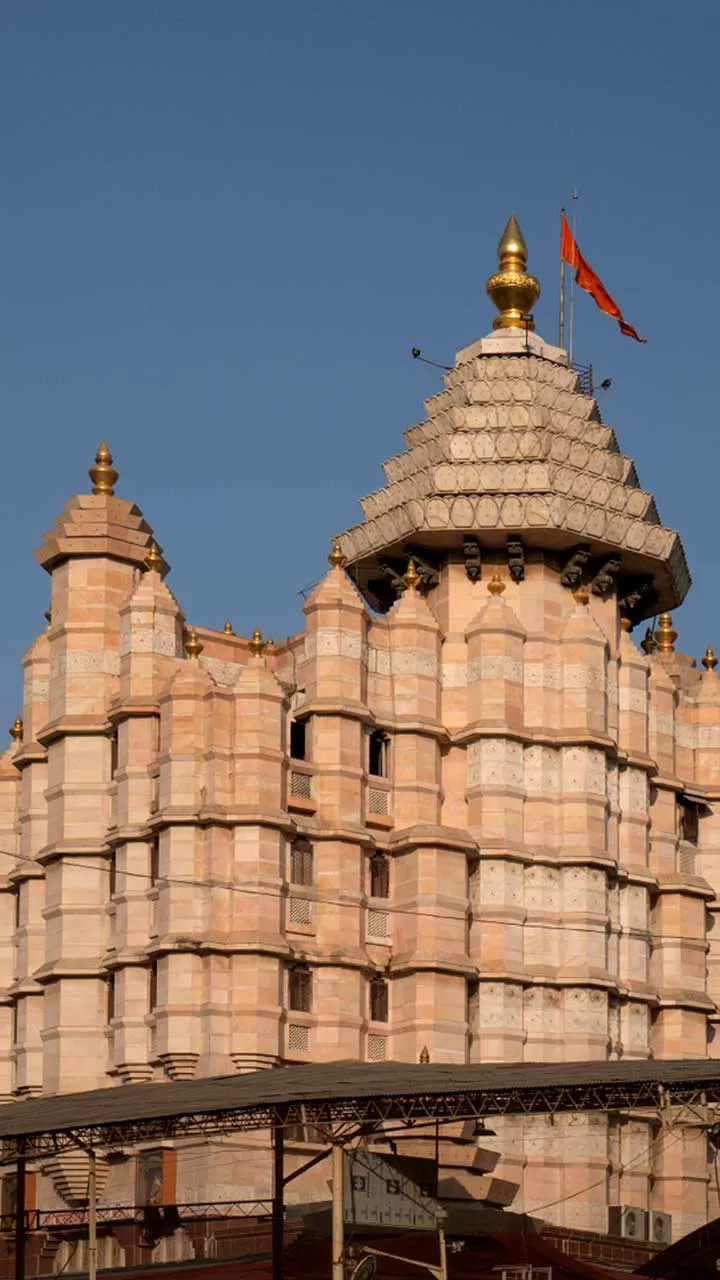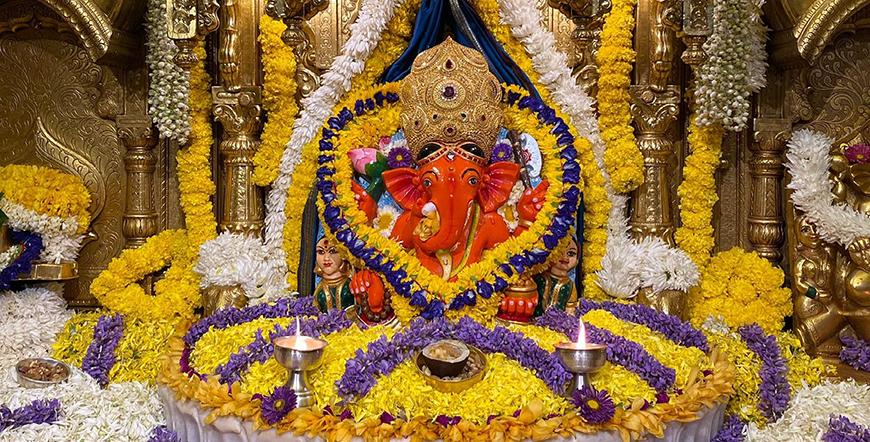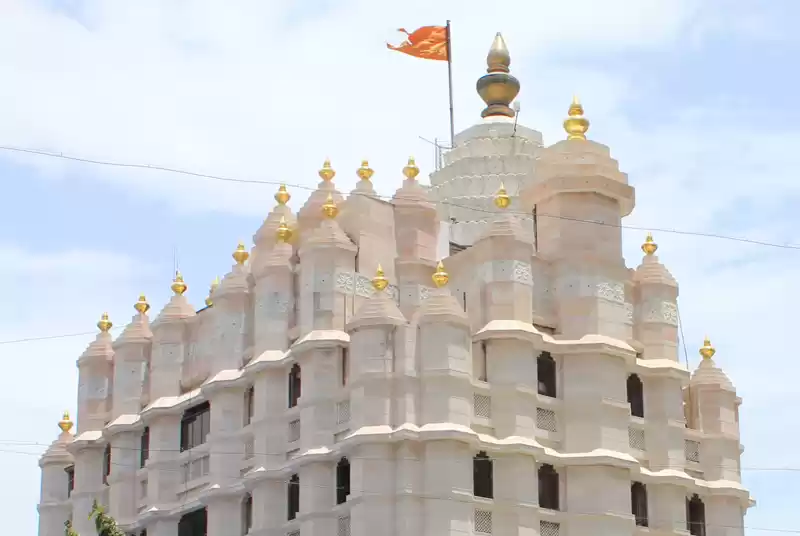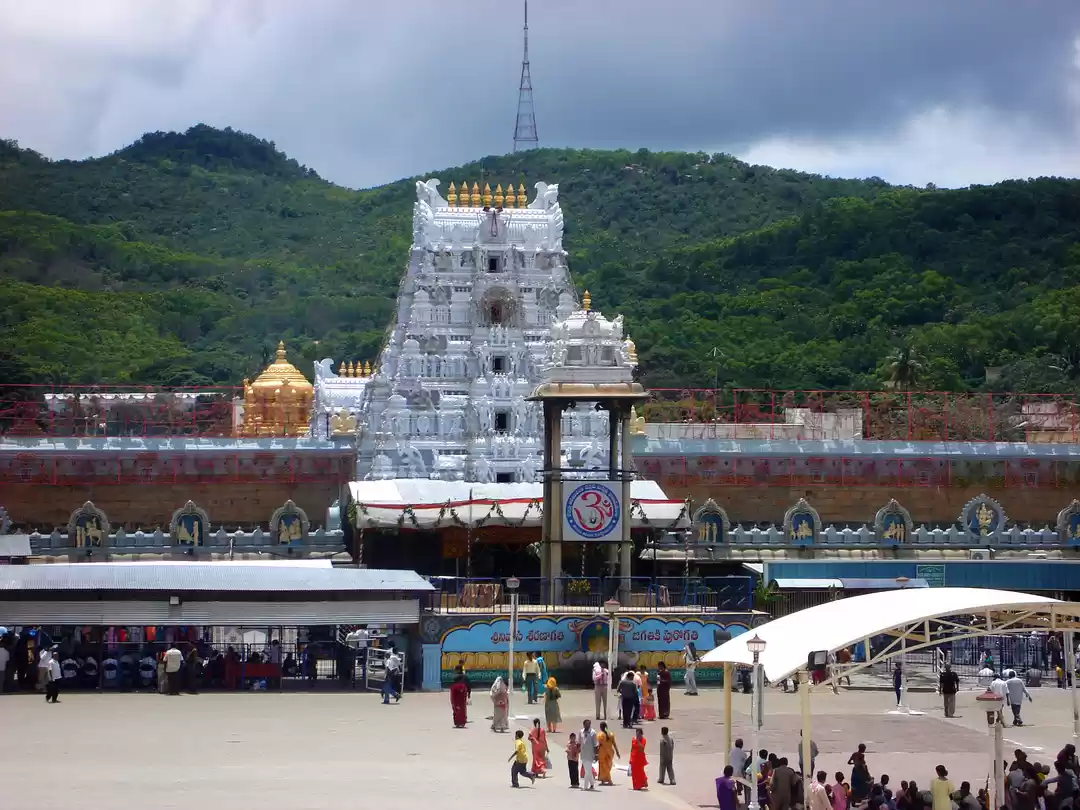Located in the heart of Mumbai, Siddhivinayak Temple is one of the most revered and iconic temples in India. Dedicated to Lord Ganesha, The temple is believed to have been built in the 18th century by a rich Agri woman named Deubai Patil, who wanted to fulfill her desire to have a Ganesha temple.
The temple's architecture is a blend of traditional Indian and modern styles, featuring a six-tiered shikara (spire) made of gold. It is particularly crowded during festivals like Ganesh Chaturthi, which is celebrated with great fervor and enthusiasm.
History of Siddhivinayak Temple

- Built in 1801 by contractor Laxman Vithu Patil under the patronage of Deubai Patil.
- Deubai Patil, a childless woman, built the temple to seek blessings for other barren women to conceive, naming it Siddhivinayak, meaning "the one who grants wishes" in Sanskrit.
Here are some important dates related to Siddhivinayak Temple
1952: Addition of a Hanuman shrine.
1966: Formation of a trust to manage temple affairs.
1975: Temple dome covered with gold-plated sheets.
1990: Reconstruction with a larger structure and enhanced facilities.
2003: Construction of a multi-level parking lot near the temple.
Customize your own Mumbai Tour with Tripoto now
Architecture of Siddhivinayak Temple

Blend of Traditional and Modern: The temple showcases a blend of traditional Hindu temple architecture with modern elements.
Area and Layout: The complex covers approximately 2.5 acres and includes shrines, halls, courtyards, and facilities.
Main Architectural Features
- The Dome: Shaped like a Shikara (spire), symbolizing Mount Meru, adorned with intricate carvings and gold-plated sheets that reflect sunlight.
- The Sanctum: Houses the main idol of Lord Ganesha, designed to allow natural light to illuminate the idol, with four doors for viewing from different angles.
- The Idol: Made of black stone, measures 2.5 feet in height and width, with a unique right-curved trunk and four hands holding symbolic objects. Flanked by consorts Siddhi and Riddhi. It is believed to be self-manifested (svayambhu) and is considered highly auspicious. The idol has its trunk curved towards the right, which is believed to be a rare and auspicious feature.
- The Wooden Doors: Carved with images of the Ashtavinayak, depicting various forms and legends of Lord Ganesha, serving as a reminder of the Ashtavinayak pilgrimage circuit in Maharashtra.
- Pradakshina Path (Circumambulation Path): Around the inner sanctum, there is a path called the Pradakshina Path, where devotees walk in a clockwise direction as a form of worship. This path is adorned with beautiful carvings and decorations.
- Dwajasthambha (Flagpole): At the entrance of the temple complex, there is a tall flagpole known as the Dwajasthambha. The flag atop the pole is hoisted on special occasions and festivals, adding to the festive atmosphere of the temple.
- Hanuman Shrine: Within the temple complex, there is a shrine dedicated to Lord Hanuman, the monkey god. Devotees often visit this shrine to seek strength, courage, and protection from Lord Hanuman.
Must Read: Must Visit Places in Mumbai You Cannot Miss
Aarti Timings of Siddhivinayak Temple

Kakad Aarti
- Timing: 5:30 am
- Significance: First aarti of the day, seeking blessings for the day ahead.
- Procedure: Bathing the idol with water, milk, honey, and curd, dressing in new clothes, offering Prasad.
Shree Darshan
- Timing: 7:15 am
- Significance: Allowing devotees to have a glimpse of the deity.
- Procedure: Adorning the idol with flowers and garlands, illuminating with lamps, chanting hymns and songs.
Naivedya Aarti
- Timing: 12:30 pm
- Significance: Offering food to the deity as a sign of gratitude.
- Procedure: Offering various delicacies, reciting mantras and prayers.
Dhoop Aarti
- Timing: 6:45 pm
- Significance: Thanking the deity for protection and guidance.
- Procedure: Fumigating with incense sticks, decorating with lights and umbrellas, singing devotional songs.
Sheja Aarti
- Timing: 9:50 pm
- Significance: Bidding farewell to the deity and wishing him a good night.
- Procedure: Covering the idol with a quilt, offering a pillow, whispering lullabies and shlokas.
Must read: Siddhivinayak Temple in Mumbai, come and seek the Blessings of Lord Ganesha
Festivals Celebrated at Siddhivinayak Temple

Siddhivinayak Temple celebrates various festivals throughout the year, which attract thousands of devotees and visitors from all over India and abroad.
Ganesh Chaturthi: On the last day, known as Anant Chaturdashi, the idol of Lord Ganesha is taken out in a grand procession and immersed in the Arabian Sea, amid chants of Ganpati Bappa Morya. This signifies the departure of the deity to his heavenly abode, and the promise of his return next year.
Sankashti Chaturthi: It falls on the fourth day of the waning moon in every month, and is dedicated to Lord Ganesha as the remover of obstacles. The devotees observe a fast on this day, and break it after having a darshan of the moon and the idol of Lord Ganesha.
Angarki Chaturthi: This is a special occasion that occurs when Sankashti Chaturthi falls on a Tuesday, which is considered auspicious for Lord Ganesha. The word Angarki means red, which is the color associated with the planet Mars or Mangal, which rules Tuesday. The devotees believe that worshipping Lord Ganesha on this day brings them good luck and prosperity.
Maghi Ganesh Jayanti: It falls on the fourth day of the waxing moon in the month of Magh (January-February), which is considered as the lunar month of his birth. The temple celebrates this festival with great fervor and enthusiasm, and organizes various cultural programs and activities for the devotees.
Entry Fee Of Siddhivinayak Temple

There is no entry fee for visiting Siddhivinayak Temple. However, if you want to avoid the long queues and have a quick darshan of the idol, you can opt for a VIP Darshan ticket, which costs Rs. 100 per person. You can buy this ticket from the counter near the temple gate or online from [the official website] of the temple.
Dress Code In Siddhivinayak Temple

There is no strict dress code for visiting Siddhivinayak Temple. However, it is advisable to wear decent and modest clothes that cover your shoulders and knees, as a mark of respect for the deity and the culture. You should also remove your shoes before entering the temple premises, and keep them in the shoe racks provided outside.
Must Read: Explore these high altitude temples in India
Places To Visit Near Siddhivinayak Temple

Dadar Beach: Dadar Beach is a serene spot along the Arabian Sea, offering a peaceful escape from the city's chaos. Visitors can enjoy a leisurely stroll along the shore or simply relax and soak in the ocean breeze.
Shree Swaminarayan Mandir, Mumbai: This temple is a stunning example of Swaminarayan architecture, known for its intricate carvings and vibrant artwork. It is a place of worship and spirituality for followers of the Swaminarayan faith.
Shivaji Park: Shivaji Park is a historic park and playground in Dadar, named after the renowned Maratha king, Chhatrapati Shivaji Maharaj. It is a popular spot for recreation, sports, and cultural events.
Worli Sea Face: Worli Sea Face is a picturesque promenade along the Arabian Sea, offering breathtaking views of the sea and the iconic Bandra-Worli Sea Link. It is a popular spot for evening walks and leisure activities.
Nehru Planetarium: The Nehru Planetarium is a popular attraction for astronomy enthusiasts, offering informative and entertaining shows about space and the universe. It is a great place for both children and adults to learn about astronomy in a fun and engaging way.
Must read: Visit These Tourist Places In India You Must Visit In June To Escape The Summer Heat
Best Time to Visit Siddhivinayak Temple

Siddhivinayak Temple is open throughout the year, from 5:30 am to 10:00 pm. However, the best time to visit the temple depends on your preference and convenience.
If you want to witness the grandeur and glory of the temple during festivals, you should visit during Ganesh Chaturthi or Maghi Ganesh Jayanti. If you want to experience the serenity and spirituality of the temple during regular days, you should visit during early morning or late evening hours.
How to Reach Of Siddhivinayak Temple

By Air
Nearest Airport: Chhatrapati Shivaji Maharaj International Airport (BOM)
Distance from Airport to Temple: Approximately 13 kilometers
Travel Options: Taxis, app-based cab services, and buses available from the airport to the temple.
By Train
Nearest Railway Station: Dadar Railway Station
Distance from Railway Station to Temple: Approximately 3 kilometers
Travel Options: Taxis, app-based cab services, and buses available from the railway station to the temple.
By Road
Road Connectivity: Well-connected by roads within Mumbai
Distance from Major Locations:
From Mumbai Central: Approximately 10 kilometers
From Bandra: Approximately 6 kilometers
From Andheri: Approximately 15 kilometers
Travel Options: Taxis, app-based cab services, and buses available to reach the temple.
Public Transportation
Buses: BEST buses in Mumbai have routes passing through Siddhivinayak Temple.
Local Trains: Local trains on the Western and Central lines have stops at nearby stations like Dadar and Prabhadevi.
Self-Drive
Parking: Limited parking available near the temple; a multi-level parking lot is also available nearby.






























